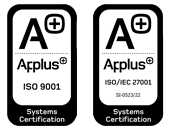What is an API, types, and benefits of integrating them into an app?
The development of mobile applications has become an increasingly important trend for companies in recent years. Being able to manage orders, know the location of a product, communicate with the rest of the team, or start up installations from a mobile device is very easy thanks to the development of applications. To create complete and 100% customizable apps, you need tools and resources such as APIs. Do you want to know more about what an API is? Read on to find out more!
As app development has become more popular and demand for apps has increased, resources are needed to develop apps more quickly. For example, the use of low-code platforms allows software professionals to create mobile applications more quickly without losing quality.

How to distribute an app? Given their increasing popularity, there are different channels through which to distribute an app.
What is an API?
API means Application Programming Interfaces and can be defined as a protocol that allows the connection of two applications. APIs allow you to define how one part of software communicates with another to create the desired functionality.
These kinds of widely used resources are not seen in an app by users. Developers are in charge of working with the different APIs to create unique mobile applications and user experiences.
APIs help developers to implement functionalities without having to create them from scratch. Therefore, it helps them to develop a customized app in a faster way, saving time and money.
As the structures of mobile applications become increasingly complex, tools are needed to facilitate the development of apps. At this point, API integrations become more important in the day-to-day work of a software professional.
Benefits of APIs
The integration of APIs is becoming more and more common thanks to their multiple benefits. As mentioned above, its popularity is mainly due to the contribution it makes to application development by streamlining the process and thus optimising time for other tasks.
Thanks to the integration of APIs, more customised tools with unlimited possibilities and more innovative tools can be created. This makes the service and user experience when using the mobile application optimally.
APIs allow functionality to be incorporated into an app or platform without the need to develop it from scratch, which makes integration and maintenance easy. In addition, it is not necessary to understand the more technical aspects of APIs for their integration and it is worth noting that they are secure as they have been developed by an IT team and tested by many others who have already implemented them in an application.
In short, APIs make it possible to improve the connectivity of applications and tools and therefore the exchange of data and information between them.
Differences React Native vs Flutter, which is better?
Types of APIs
Now that you know what an API is and what it means, did you know that they are not all the same? Below, we will talk about the three main types of APIs and how they differ from each other.
External APIs
These are the ones that can be accessed by anyone, whether they are developers, partners, etc. It is an easy way to search for and implement an API that adapts to what you are looking for thanks to open websites and directories where you can find thousands of APIs.
Internal APIs
Unlike external APIs, internal APIs are those that are developed within an organisation and can only be accessed by people within the company. Developing APIs allows the creation of new internal initiatives and functionalities to modernise systems and adapt to the new digital era.
Partner APIs
These APIs can be considered a mix of the other two, and this type of APIs can be accessed by people outside an organisation, but only if they have permission. In other words, they are external but only for those people with authorisation to do so.
Examples of APIs
Although you may have found out in this post what an API is, if you have a mobile device and use apps, it is very likely that in those applications there are API integrations and you don’t know it.
Therefore, here are some common examples of APIs that you can find in a mobile application.
Have you ever had the possibility to register on a platform or website through one of your social networks such as Facebook? This is an API that is integrated into many applications to make it easier for users to register or log in and thus make the user experience better.
Another example would be a mobile payment service in an online shop that is often integrated into an app or website to allow users to shop online securely.
Another common example is the integration of Google Maps into many mobile applications. In all those where maps are present or knowing the location of people or things is essential, the integration of Google Maps is the most popular.
Where to find an API
Currently, there are several sites where you can find APIs of all kinds to integrate any functionality. From websites to API directories are places from which to download them. Generally, websites are open and anyone can sell one; while directories have more control and can be evaluated before being uploaded and made available to users.
At ABAMobile, we have been developing custom mobile apps for over 10 years and working with API integration to create fully customised and innovative solutions. Contact us to start your next project!
Get in touch with us to develop your next development project!







